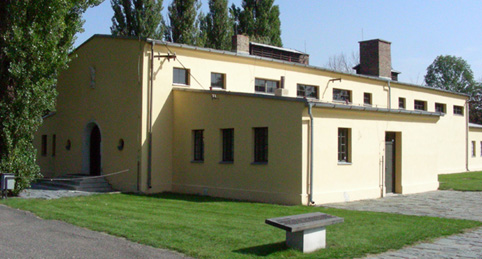
|
Discover historical Jewish Sights! |

|
|
Who are we?
| We show you more for less! Don't miss it out! |
Phone : +420 604 254 334
Fax: +420 224 816 628 |

|
Discover historical Jewish Sights! |

|
|
Who are we?
| We show you more for less! Don't miss it out! |
Phone : +420 604 254 334
Fax: +420 224 816 628 |
| Last updated on May 28, 2011 | Main page |
| Terezin Ghetto - The WW2 Concetration Camp |
http://www.private-tours.cz/
|
||||||
| Remember Spirits of innocent Jewish people! |
|
||||||
| Price range: Please see Detailed Price list! | Remember Spirit | ||||||

|
|---|
| The Jewish Cemetery of Terezin |
|
Terezin - town
The fortress of Terezin ( Theresienstadt ) was built under the Emperor Josef II in 1780-1790 . It was meant to protect access roads against the Prussian army during the Prussian-Austrian wars in the 18th century. Both parts - the town called the Main Fortress as well as the Small Fortress became notoriously famous after the occupation of the Czech lands by the Nazi army . What to see except of the town: The Ghetto museum ( the former school that served during the war as a boy´s home ) - the exhibition about the 2nd World War , about Terezin , about the Children´s Drawings , the movies in the cinema ( about the History of Terezin , the Children´s drawings , the Propaganda Movie (the part that survived) made for the Red Cross delegates ) The Magdeburg barracks - a seat of the Council of Elders and the Jewish self-administration . Today it houses a meeting Centre and an attic theatre , and visitors can see both a replica of a dormitory of the time of the ghetto ( the survived people offered their private things that they kept from time of the war to exhibit them there ) and a permanent exhibition devoted to various spheres of cultural activities in the ghetto. The Memorial by Ohre river - where the ashes of the perished prisoners ( about 22000) were thrown to the river at the Nazis order in 1944 to destroy the evidence about the incredibly high mortality in the town. The Jewish Cemetery and the Crematorium -
The Jewish Cemetery is situated on both sides of the Crematorium and there are buried in both the mass graves and single garves over 9000 victims that died during the first year of the existence of the Ghetto . The Small Fortress -
It was built as a part of the fortification system . It was used from the beginning as a prison where apart from the soldiers , many people related to the nationalist-liberation struggles were jailed in the 19th century. |
|
|
|
|
|
|
|
|

Opening hours : The Small Fortress that became the Gestapo´s prison in 1940. The Bohusovice crematorium open from March 1 to November 30 from 10,00 a.m. to 5,00 p.m. except Saturdays The tickets are paid extra by the clients , it costs about 5,50 USD per 1 person.

Pleae read more www.private-tours.net/country_tour/number_29 |
![]()
| Last updated on May 28, 2011 | Main page |